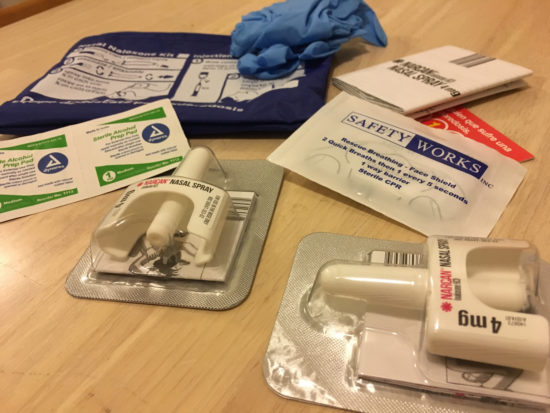
Mayor’s office says it’s not worth the expense
The South Bronx had the highest rate of drug overdoses in the city last year, according to a study by the health department. City Councilman Rafael Salamanca Jr. says local schools should bear that in mind and be prepared for the worst.
Salamanca has proposed a bill that would ensure that the city’s public schools stock two doses each of Narcan, known generically as naloxone. The drug temporarily reverses the effects of an opioid overdose, reviving victims long enough for professional medical assistance to get to them.
But the Councilman is getting unexpected pushback from the mayor’s office, which argues that the risk is remote and spending money for naloxone in city schools is not a worthwhile expense for taxpayers. The rift has pitted Salamanca and drug prevention organizations against City Hall.
The mayor’s office contends that 15- to 18-year-olds accounted for only 0.7 percent of opioid-involved deaths from 2000-2016 according to the Health Department—none of which took place at a public school in the city.
“We are making naloxone more available than ever by distributing 100,000 kits across the city and equipping all first responders with this medication,” said the mayor’s Deputy Press Secretary Olivia Lapeyrolerie. “We monitor substance use in our schools closely and see no need to stock kits on site.”
Many high school students think the bill doesn’t reflect the reality they see at their schools every day. Some Mott Haven students say peers who experiment with drugs typically avoid using them at school in order not to get in trouble. Officers James McGuire and Henry Reyes of the 40th Precinct agreed that the most common locations they find youth doing drugs are off campus, including parks, NYCHA courtyards and the occasional abandoned house.
Salamanca’s office responded to the mayor’s spokeswoman’s remarks by noting that naloxone is cheap, easy to administer and should be available in as many public spaces as possible, in case it’s needed. He and supporters of the bill stress that when an overdose occurs, every second counts. They want to be prepared if and when the nationwide problem hits home. Salmanca’s office could not provide an estimate of the cost of implementing the bill.
“If you look at overdose statistics nationwide, one of the quickest rising opioid overdose populations is 15- to 24-year-olds,” said Ryan Monell, Salamanca’s legislative and communications director, who also praised recent legislation that passed in New Rochelle and New Jersey, requiring schools to carry the drug.
Boom!Health, a harm reduction and wellness leader in the Bronx, supports the measure, pointing out that having Narcan on hand also requires educating the public about it.
“Everyone should know what Narcan is and how to use it,” said Boom!Health Director of Communications, Advocacy and Community Engagement Julia DeWalt. “You never know what someone is going through at home, or how this education might help a family off campus. This is an opportunity for students to understand risk, whether it’s affecting them or someone they know,” she said, referring to a preliminary draft of the bill.
